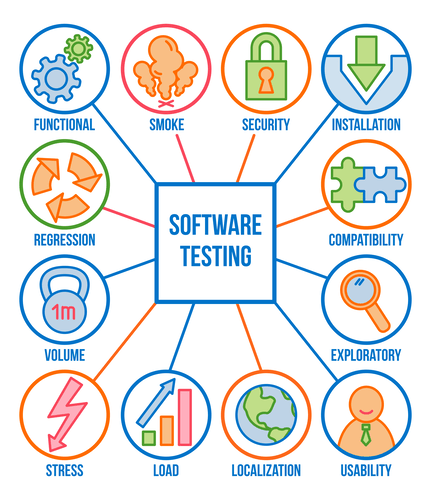Using NLU technology, you can sort unstructured data (email, social media, live chat, etc.) by topic, sentiment, and urgency (among others). These tickets can then be routed directly to the relevant agent and prioritized. The predictions of the last specified intent classification model will always be what’s expressed in the output.

To this end, a method called word vectorization maps words or phrases to corresponding “vectors”—real numbers that the machines can use to predict outcomes, identify word similarities, and better understand semantics. Word vectorization greatly expands a machine’s capacity to understand natural language, which exemplifies the progressive nature and future potential of these technologies. Although implementing natural language capabilities has become more accessible, their algorithms remain a “black box” to many developers, preventing those teams from achieving optimal use of these functions.
When possible, use predefined entities
This is achieved by the training and continuous learning capabilities of the NLU solution. You can tag sample sentences with modifiers to capture these sorts of common logical relations. This way, the sub-entities of BANK_ACCOUNT also become sub-entities of FROM_ACCOUNT and TO_ACCOUNT; there is no need to define the sub-entities separately for each parent entity. We also include a section of frequently asked questions (FAQ) that are not addressed elsewhere in the document.

No matter which version control system you use-GitHub, Bitbucket, GitLab, etc.-it’s essential to track changes and centrally manage your code base, including your training data files. An out-of-scope intent is a catch-all for anything the user might say that’s outside of the assistant’s domain. If your assistant helps users manage their insurance policy, there’s a good chance it’s not going to be able to order a pizza. The first is SpacyEntityExtractor, which is great for names, dates, places, and organization names. It’s used to extract amounts of money, dates, email addresses, times, and distances.
NLU design model and implementation
The meaning of certain words or phrases could vary in different industries. An industry-specific pre-trained NLU Model is able to differentiate the meanings out of the box and doesn’t require fresh training data to perform optimally. As a result of developing countless chatbots for various sectors, Haptik has excellent NLU skills.
The output is an object showing the top ranked intent and an array listing the rankings of other possible intents. Before turning to a custom spellchecker component, try including common misspellings in your training data, along with the NLU pipeline configuration below. This pipeline uses character n-grams in addition to word n-grams, which allows the model to take parts of words into account, rather than just looking at the whole word. Lookup tables and regexes are methods for improving entity extraction, but they might not work exactly the way you think.
The Key Difference Between NLP and NLU
When this happens, most of the time it’s better to merge such intents into one and allow for more specificity through the use of extra entities instead. Finally, once you’ve made improvements to your training data, there’s one last step you shouldn’t skip. Testing ensures that things that worked before still work and your model is making the predictions you want. A common misconception is that synonyms are a method of improving entity extraction. In fact, synonyms are more closely related to data normalization, or entity mapping. Synonyms convert the entity value provided by the user to another value-usually a format needed by backend code.
It gives machines a form of reasoning or logic, and allows them to infer new facts by deduction. Both NLP and NLU aim to make sense of unstructured data, but there is a difference between the two. CountVectorsFeaturizer can be configured to use How to Train NLU Models either word or character n-grams, which is defined using the analyzer config parameter. An n-gram is a sequence of n items in text data, where n represents the linguistic units used to split the data, e.g. by characters, syllables, or words.
Industry analysts also see significant growth potential in NLU and NLP
In order for the model to reliably distinguish one intent from another, the training examples that belong to each intent need to be distinct. That is, you definitely don’t want to use the same training example for two different intents. When building conversational assistants, we want to create natural experiences for the user, assisting them without the interaction feeling too clunky or forced. To create this experience, we typically power a conversational assistant using an NLU. The greater the capability of NLU models, the better they are in predicting speech context. In fact, one of the factors driving the development of ai chip devices with larger model training sizes is the relationship between the NLU model’s increased computational capacity and effectiveness (e.g GPT-3).
- But what’s more, our bots can be trained using additional industry-specific phrases and historical conversations with your customers to tweak the chatbot to your business needs.
- Synonyms don’t have any effect on how well the NLU model extracts the entities in the first place.
- To this end, a method called word vectorization maps words or phrases to corresponding “vectors”—real numbers that the machines can use to predict outcomes, identify word similarities, and better understand semantics.
- If the model’s performance isn’t satisfactory, it may need further refinement.
- Models aren’t static; it’s necessary to continually add new training data, both to improve the model and to allow the assistant to handle new situations.
- But, cliches exist for a reason, and getting your data right is the most impactful thing you can do as a chatbot developer.
Run Training will train an NLU model using the intents and entities defined in the workspace. Training the model also runs all your unlabeled data against the trained model and indexes all the metrics for more precise exploration, recommendations and tuning. Now that we’ve discussed the components that make up the NLU training pipeline, let’s look at some of the most common questions developers have about training NLU models. By default, the analyzer is set to word n-grams, so word token counts are used as features. You can also use character n-gram counts by changing the analyzer property of the intent_featurizer_count_vectors component to char. This makes the intent classification more resilient to typos, but also increases the training time.
Guide to Natural Language Understanding (NLU) in 2023
Simply put, using previously gathered and analyzed information, computer programs are able to generate conclusions. For example, in medicine, machines can infer a diagnosis based on previous diagnoses using IF-THEN deduction rules. Jieba – Whitespace works well for English and many other languages, but you may need to support languages that require more specific tokenization rules. In that case, you’ll want to reach for a language-specific tokenizer, like Jieba for the Chinese language. No matter which pipeline you choose, it will follow the same basic sequence. We’ll outline the process here and then describe each step in greater detail in the Components section.

The results are intent predictions that are expressed in the final output of the NLU model. Featurizers take tokens, or individual words, and encode them as vectors, which are numeric representations of words based on multiple attributes. The intent classification model takes the output of the featurizer and uses it to make a prediction about which intent matches the user’s message. The output of the intent classification model is expressed in the final output of the NLU model as a list of intent predictions, from the top prediction down to a ranked list of the intents that didn’t “win.” Regex_featurizer – The regex_featurizer component can be added before CRFEntityExtractor to assist with entity extraction when you’re using regular expressions and/or lookup tables.
Make sure the distribution of your training data is appropriate
For example, in a coffee-ordering NLU model, users will certainly ask to order a drink much more frequently than they will ask to change their order. In these types of cases, it makes sense to create more data for the “order drink” intent than the “change order” intent. But again, it’s very difficult to know exactly https://www.globalcloudteam.com/ what the relative frequency of these intents will be in production, so it doesn’t make sense to spend much time trying to enforce a precise distribution before you have usage data. Training data also includes entity lists that you provide to the model; these entity lists should also be as realistic as possible.


